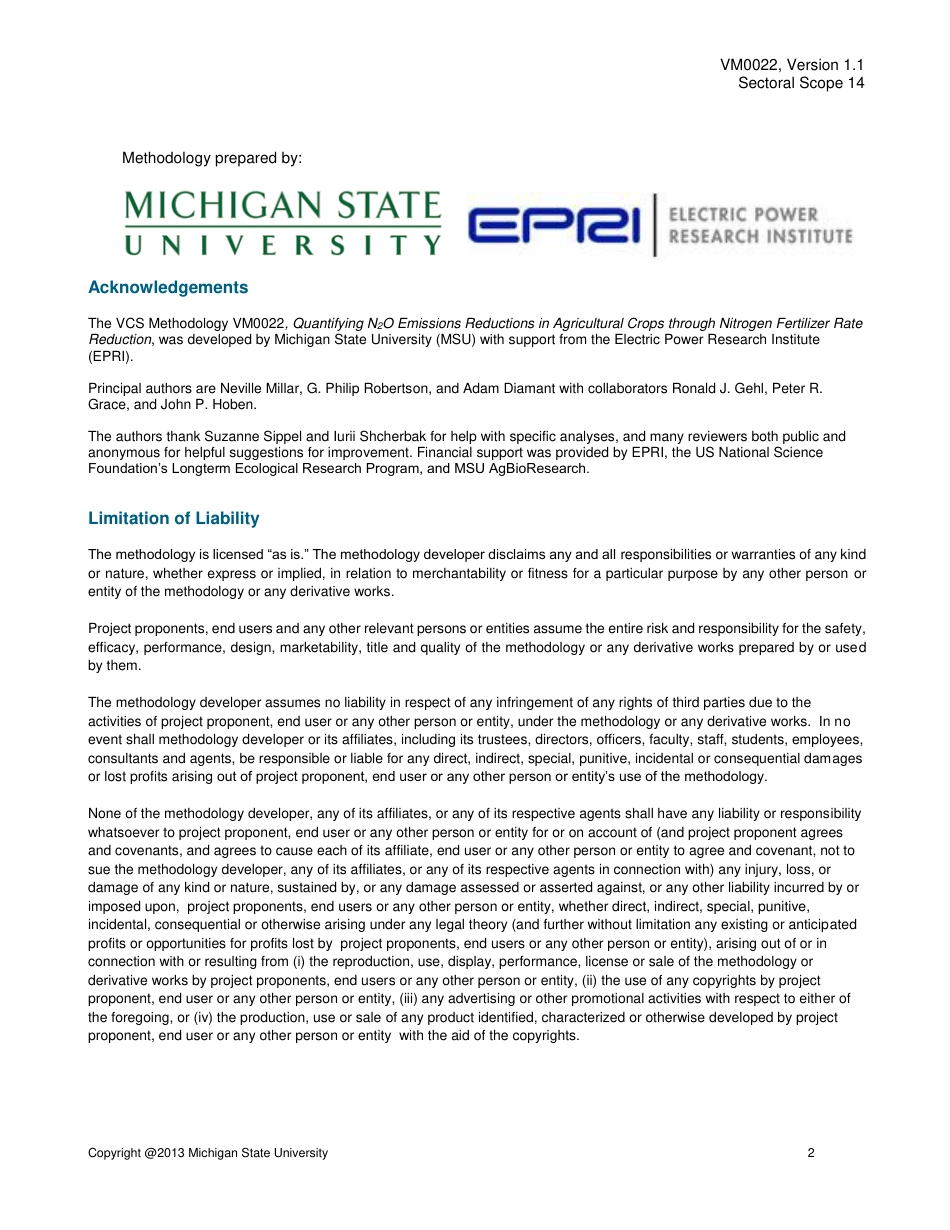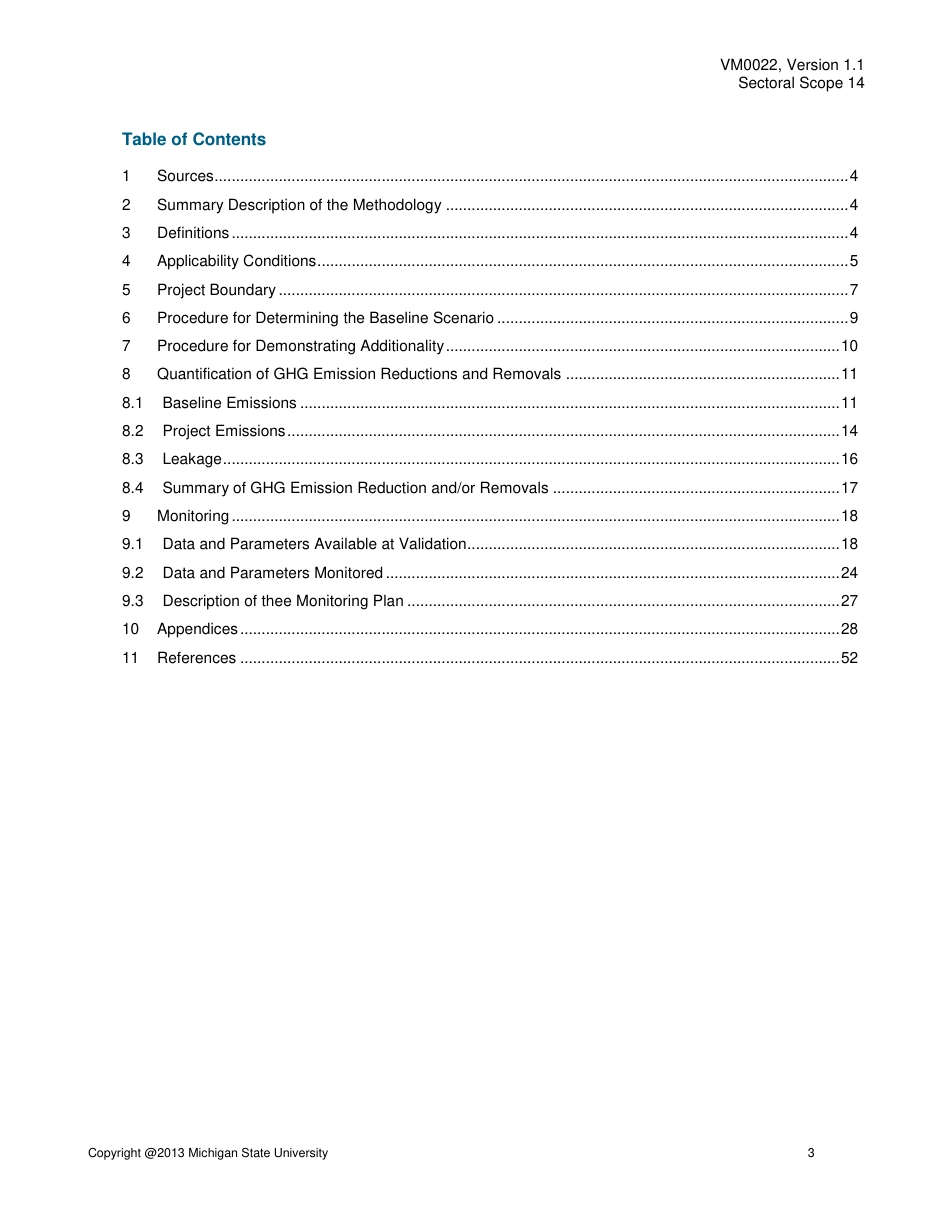Quantifying N2O Emissions Reductions in Agricultural Crops through Nitrogen Fertilizer Rate Reduction Approved VCS Methodology VM0022 Version 1.1, 30 September 2013 Sectoral Scope 14 Quantifying N2O Emissions Reductions in Agricultural Crops through Nitrogen Fertilizer Rate Reduction ©2013 Michigan State University VM0022, Version 1.1 Sectoral Scope 14 Copyright @2013 Michigan State University 2 Methodology prepared by: Acknowledgements The VCS Methodology VM0022, Quantifying N2O Emissions Reductions in Agricultural Crops through Nitrogen Fertilizer Rate Reduction, was developed by Michigan State University (MSU) with support from the Electric Power Research Institute (EPRI). Principal authors are Neville Millar, G. Philip Robertson, and Adam Diamant with collaborators Ronald J. Gehl, Peter R. Grace, and John P. Hoben. The authors thank Suzanne Sippel and Iurii Shcherbak for help with specific analyses, and many reviewers both public and anonymous for helpful suggestions for improvement. Financial support was provided by EPRI, the US National Science Foundation’s Longterm Ecological Research Program, and MSU AgBioResearch. Limitation of Liability The methodology is licensed “as is.” The methodology developer disclaims any and all responsibilities or warranties of any kind or nature, whether express or implied, in relation to merchantability or fitness for a particular purpose by any other person or entity of the methodology or any derivative works. Project proponents, end users and any other relevant persons or entities assume the entire risk and responsibility for the safety, efficacy, performance, design, marketability, title and quality of the methodology or any derivative works prepared by or used by them. The met...



